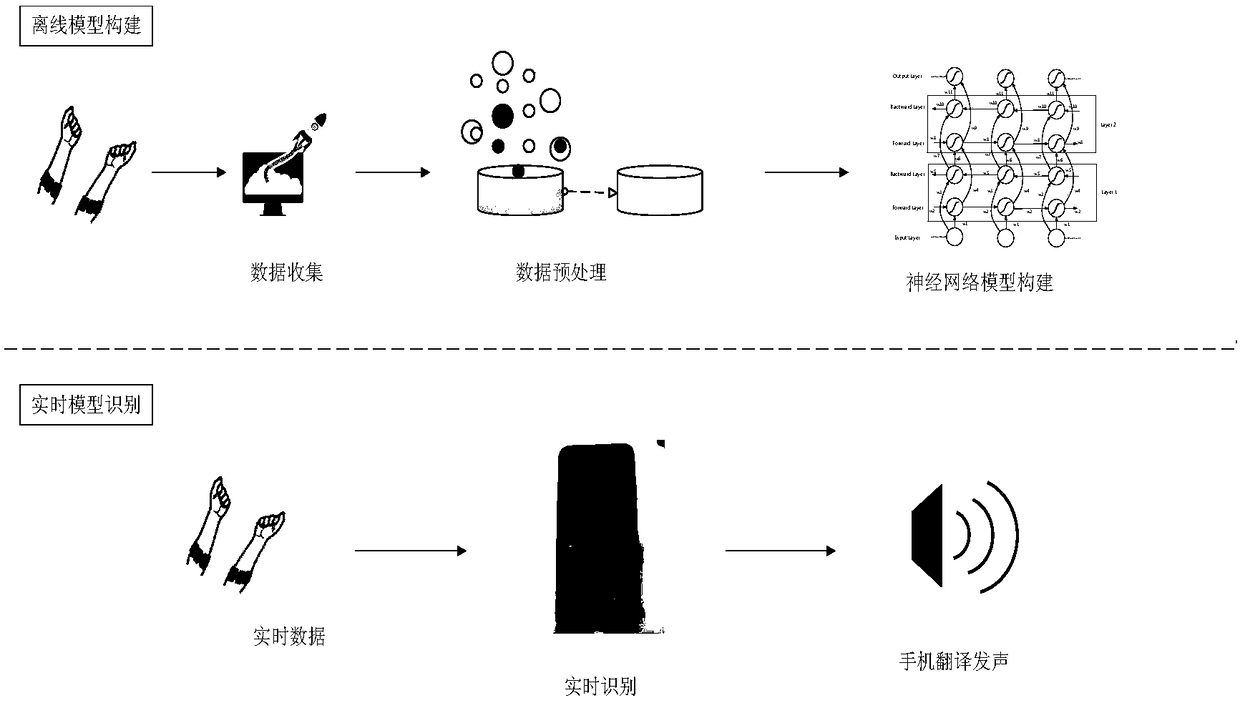A sign language recognition method based on multi-source information fusion
A multi-source information fusion and identification method technology, applied in the field of computer science time-frequency signal processing and cyclic neural network model construction, can solve the problems of poor portability, heavy data gloves, difficult to accurately detect, etc., to achieve unlimited application occasions, Suitable for promotion, strong mobile effect
- Summary
- Abstract
- Description
- Claims
- Application Information
AI Technical Summary
Problems solved by technology
Method used
Image
Examples
Embodiment Construction
[0040] The present invention is mainly based on multi-sensor fusion technology, time-frequency signal processing technology, and cyclic neural network technology. Considering the integrity of both-handed sign language and the problems of fine-grained finger language recognition and coarse-grained sign language recognition, we use multi-sensor fusion technology and neural network Network combination to improve recognition accuracy, a multi-sensor fusion sign language recognition system based on multi-source information fusion is proposed. This system fully considers the integrity, portability, and real-time issues of sign language, and applies deep learning to the sign language recognition system, making the system more realistic.
[0041] 1. Implementation plan:
[0042] Implementation of this system figure 1 As shown, the specific structure can be divided into three parts: sign language signal collection, model recognition, and real-time translation.
[0043] The collection...
PUM
 Login to View More
Login to View More Abstract
Description
Claims
Application Information
 Login to View More
Login to View More - R&D
- Intellectual Property
- Life Sciences
- Materials
- Tech Scout
- Unparalleled Data Quality
- Higher Quality Content
- 60% Fewer Hallucinations
Browse by: Latest US Patents, China's latest patents, Technical Efficacy Thesaurus, Application Domain, Technology Topic, Popular Technical Reports.
© 2025 PatSnap. All rights reserved.Legal|Privacy policy|Modern Slavery Act Transparency Statement|Sitemap|About US| Contact US: help@patsnap.com



